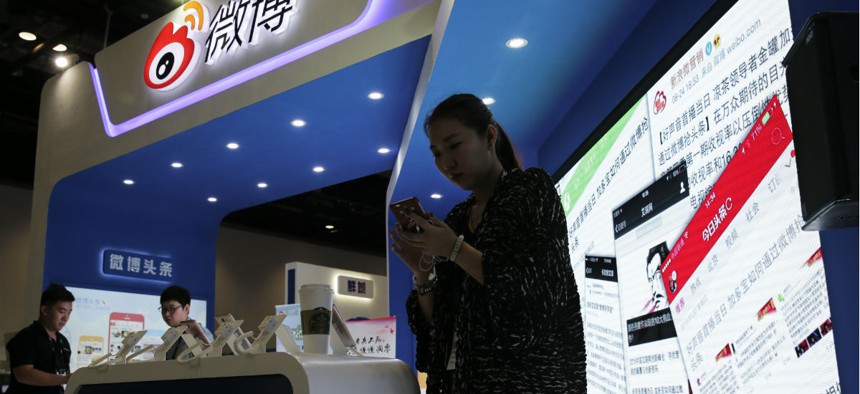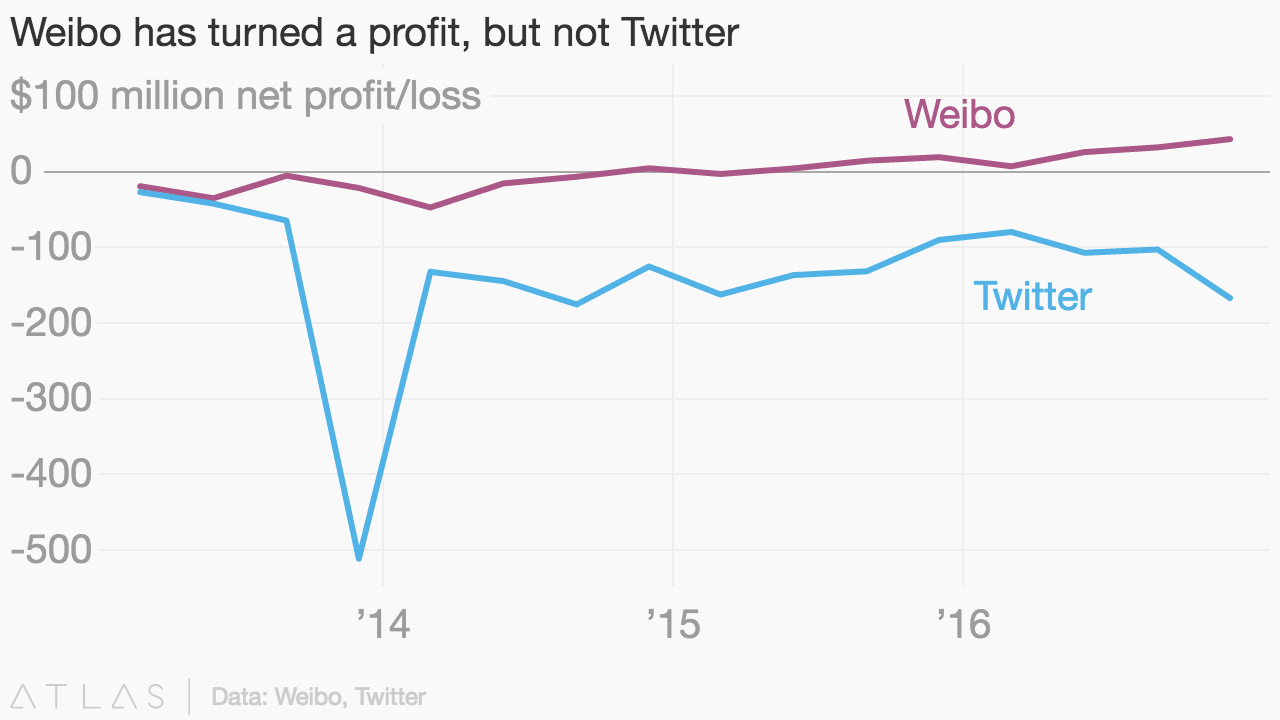China’s Twitter Clone Will Soon Have More Users Than Twitter

A woman browses her smartphone near a display booth for China's Weibo microblogging website at the 2016 Global Mobile Internet Conference in Beijing, April 28, 2016. Andy Wong/AP
Weibo doesn't have problems growing.
Sina Weibo started as China’s Twitter clone in 2009. Like other internet services in China, it filled the vacuum left by foreign offerings being driven out by government censorship. There’s basically no rivalry between the counterparts. They tap user bases that have zero overlap. The red-eyed creature of Sina Weibo’s logo is for China only, and the blue bird of Twitter is for the rest of the world.
While Twitter is going through some rough times, Weibo, which went public in the U.S. in 2014, is thriving. In fact, Weibo is on track to surpass its U.S. counterpart in one of the key metrics for social media platforms: monthly active users.
Weibo revealed last week in its latest financial report that it now has 313 million users active each month, versus 319 million on Twitter. Weibo’s year-on-year user growth rate has stayed above 30 percent since 2014, while Twitter’s has flattened in the past year. It’s almost certain Weibo will have the larger subscriber base when the companies next report their quarterly earnings.


Strong ad sales were a major growth driver in the fourth quarter, said Weibo CEO Wang Gaofei in a statement, noting his company is benefiting as advertisers shift their budgets toward mobile, social and video terminals.
Another reason Weibo is about to pass Twitter: Its product has evolved more. Once a Twitter copycat, Weibo is now more like all-in-one platform, a combination of Twitter, Instagram and YouTube. In one of its latest moves, it’s also entered China’s booming live-streaming industry.


